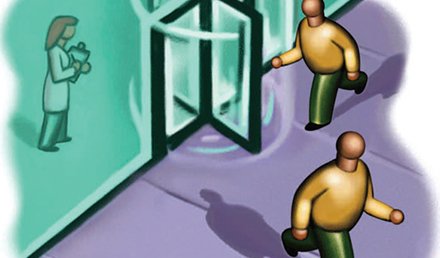Headaches are both common and challenging, accounting for 4% of ED visits and comprising the eighth most-common complaint seen by primary care physicians. This frequency can create a false sense of security, as there are numerous life-threatening etiologies hiding in the “haystack.” In this month’s case, our patient was a bounceback on her first visit, having previously seen her PCP and an urgent care doctor. In addition to a brief discussion of headaches and their …
Read MoreThe Story of Jonathan— One Week in January
The Patient’s Perspective Jonathan is a young man who changed the course of musical theatre and would still be making history today if things had turned out differently. Jonathan was born in Mount Vernon, NY in 1960. When he was 22, he moved to New York City to pursue his dream of writing a musical. Like most struggling artists, life wasn’t easy. He spent weekends waiting tables at the Moondance Diner in Soho. He spent …
Read More
The Story of Jonathan-One Week in January
Jonathan is a young man who changed the course of musical theater and would still be making history today if things had turned out differently. Jonathan was born in Mount Vernon, NY in 1960. When he was 22, he moved to New York City to pursue his dream of writing a musical. Like most struggling artists, life wasn’t easy. He spent weekends waiting tables at the Moondance Diner in Soho. He spent weekdays at his …
Read More
The Case of a 49-Year-Old Woman with Pleuritic Chest Pain
In our last Bouncebacks article, we explored the difficulties that arise when the patient and doctor disagree on treatment through the case of a 28-year old pregnant patient who left against medical advice (JUCM, February 2009). In the second part of this series, we present a case which explores differences in expectations between a patient and the physicians.
Read More
The Case of a 28-Year-Old Pregnant Female with Shortness of Breath

The Case of a 37-Year-Old Female with Flu-like Symptoms
In primary care medicine, patients’ symptoms are approached from the “front door;” what are the most likely causes? Urgent care medicine often starts with a “back door” approach; think “worst first,” then proceed backward through the differential after excluding life threatening causes. Urgent care does not have the luxury of an established patient relationship or defined return visit we often have only one chance to get it right! The differential for an urgent care patient …
Read More
The Case of a 37-Year-Old Man with Headaches
It is common knowledge that each patient needs to have a symptomspecific evaluation with each visit, but it is easy to be misled by “frequent fliers” who have presented many times with the same complaint. Take this month’s case, for example: a 37-year-old man with a headache who had four emergency department and two primary care visits before finally receiving the correct diagnosis. Accuracy and vigilance must be the goal of each patient encounter, no …
Read More
The Case of a 24-Year-Old Man with Abdominal Pain
Our goal with the Bouncebacks series is to maximize patient safety and minimize the urgent care provider’s medico-legal exposure. As Greg Henry wrote in the forward of our Bouncebacks! book, “The smart doctor is not the one who learns from his own mistakes. The smart doctor is the one who learns from the mistakes of others.” Our case this month involves a young man with vomiting and diarrhea and abdominal pain. This typical urgent care …
Read More
The Case of a 71-Year-Old Man with Back Pain
Though it is easy to predict the usual etiology of common complaints, we need to be able to exclude life-threatening causes of symptoms. In law, we are innocent until proven guilty. In medicine, we are required to prove certain diseases are not occurring; we are, in a sense, guilty until proven innocent: A 50-year-old man with chest pain and diaphoresis has an MI until proven otherwise. A 22-year-old woman with lower abdominal pain has an …
Read More
The Case of a 10-Year-Old Male with Eye Pain
Other than these medical errors, dyspnea and advanced age were the two most common factors associated with an unscheduled return visit. What is the incidence of bouncebacks? What is the incidence of bounceback admissions? What is the inci- dence of death in patients recently discharged from the ED? What percent of bouncebacks occur because of medical errors? How can we use this information to improve patient safety? This month, we will discuss Question IV: What …
Read More